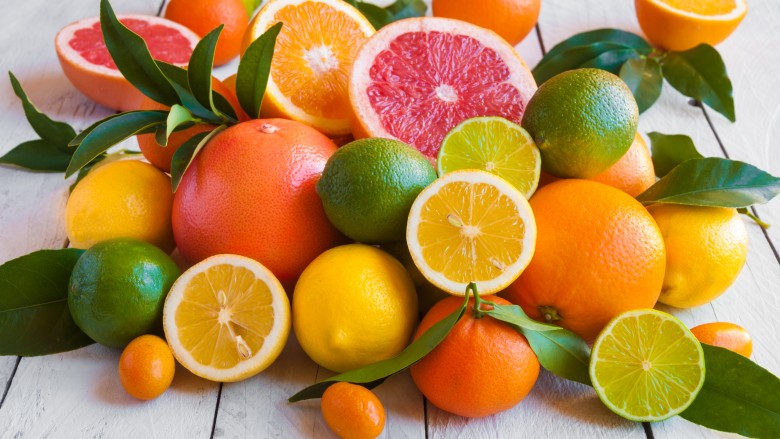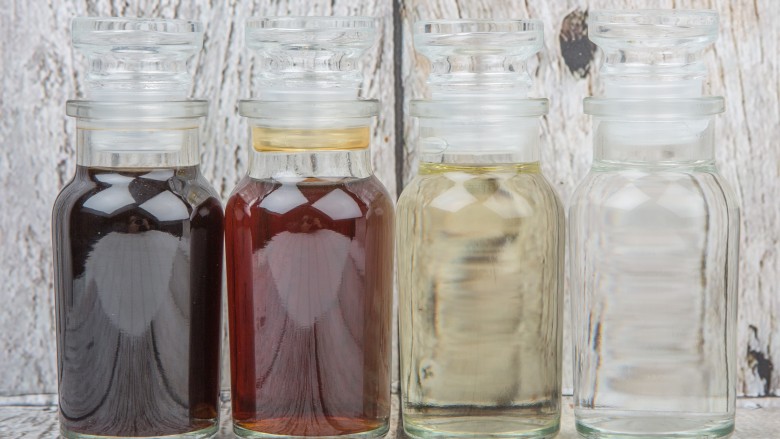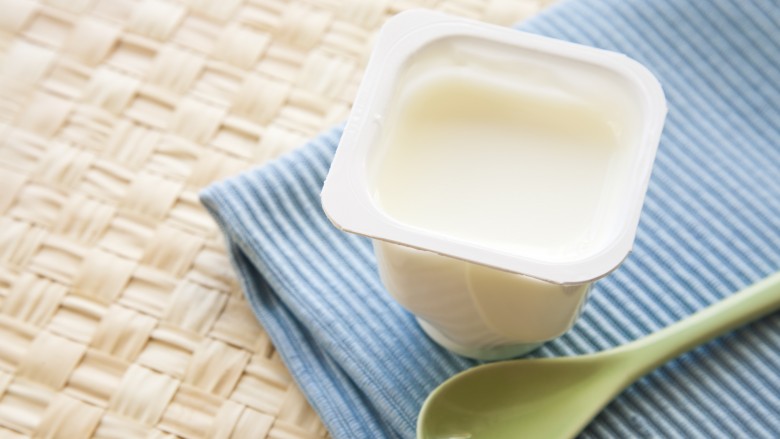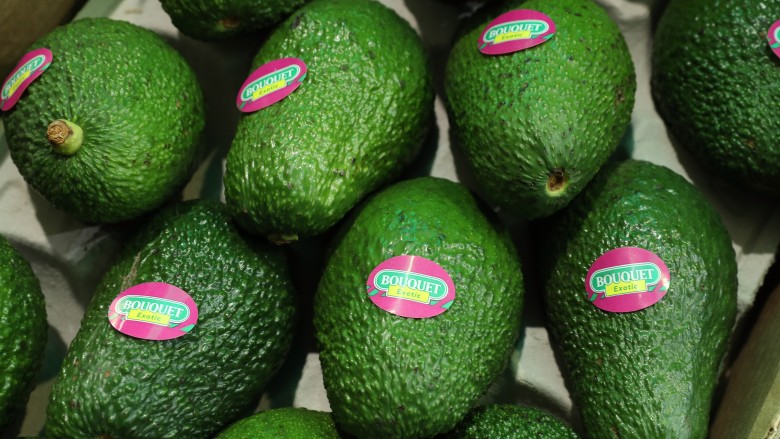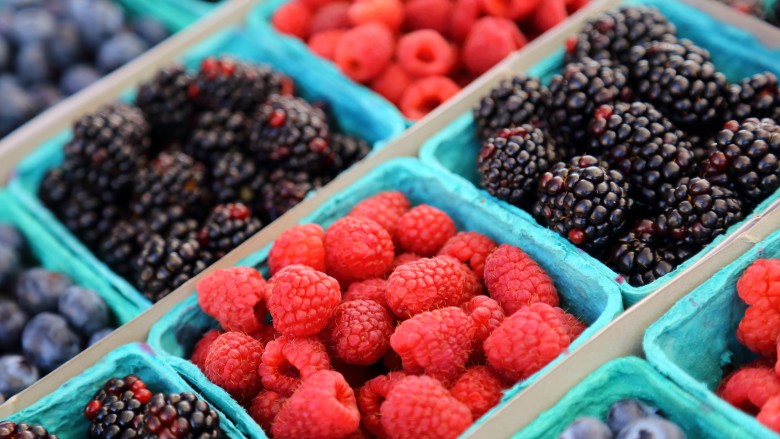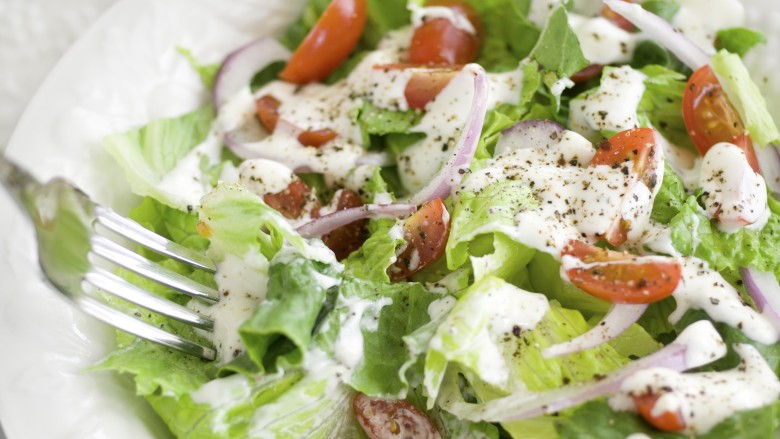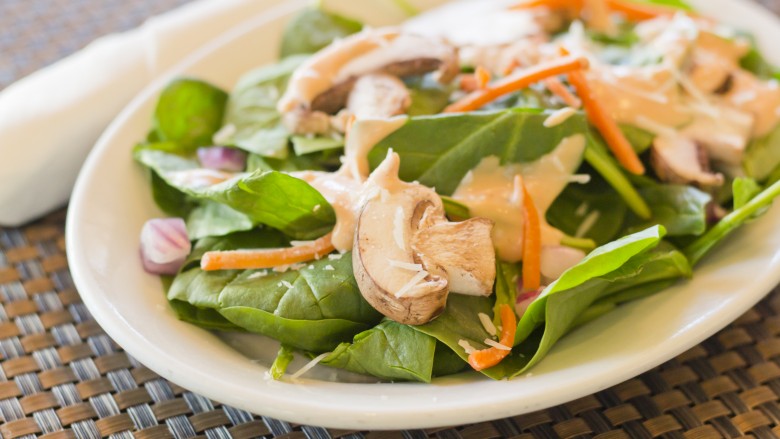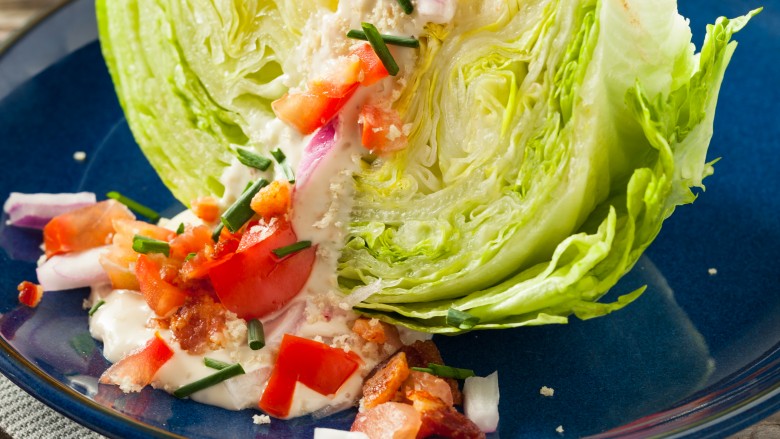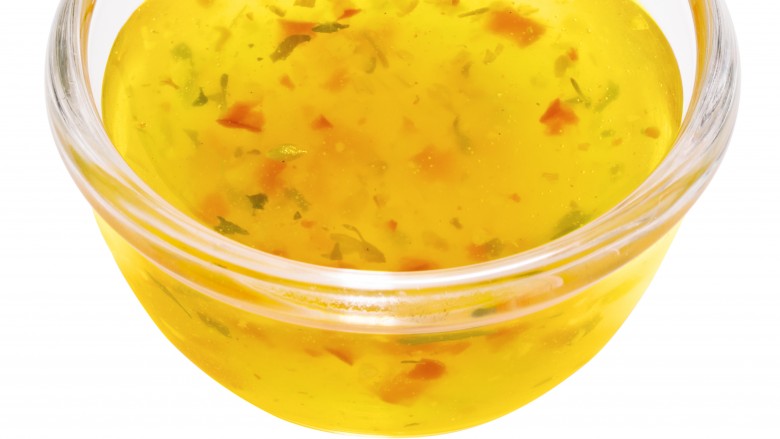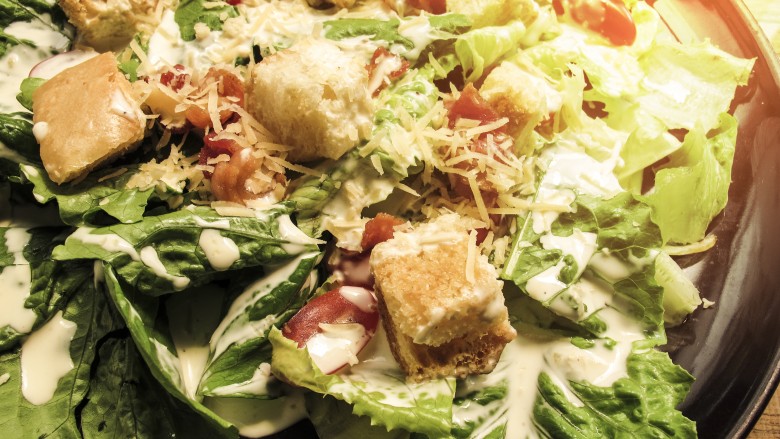5 Dressings You Should Eat And 5 You Shouldn't
We all know we should eat our veggies, yet a plain salad tastes so much better when the leafy greens are drizzled in a flavorful dressing. The problem is that most salad dressings aren't necessarily the most nutritious way to finish greens if #health is your goal. Often devoid of nutrients, they add nothing nourishing to your salads. From Thousand Island to ranch, store-bought dressings are generally either high in fat content, full of sodium, overly sugary, or loaded with additives. The best way to avoid turning a healthy salad into a nutritional nightmare is to whip up light dressings yourself. Luckily, most are a cinch to prepare. Between opting for homemade dressings and skipping a few of the more notorious commercial types, you'll be well on your way to enjoying better salads. Here's a brief roundup of the good guys and the bad ones.
Bright citrus makes all the difference
Incorporating all varieties of citrus juices into your salad dressings is one healthy, refreshing, and irresistible way to get those much recommended servings of fruit into your daily diet. Most vinaigrettes have an acidic component derived from vinegar, but you could get that effect from citrus, too, and with a touch of added sweetness to boost. Amp up the flavor with fresh herbs, minced shallots, and citrus zest if you like.
Try this streamlined recipe from Detoxinista when you want to infuse vibrancy to your salad. It's a refreshingly light dressing made with lemon and lime juices and accented by garlic and ginger.
Just use vinegar
Good news! You can use incredibly flavorful vinegars to dress your salads without adding tons of fatty oils and other extraneous ingredients known to destroy diets. Whether you use balsamic, red wine, or rice and malt vinegars, you can transform them into delicious salad dressings simply by adding pantry spices like freshly ground black pepper, cumin, or paprika. For fancier takes, try incorporating fresh herbs like sage, parsley, or dill. Since two tablespoons of balsamic vinegar contains about 28 calories and zero fat, you can enjoy robust flavors minus the guilt.
I love this oil-free balsamic dressing from Whole Foods Market for its simplicity and good use of nutritional yeast and its versatile umami flavor.
Try the piquant dressing from Vegan American Princess for a light oil-free vinaigrette that uses just three ingredients.
Get your creamy dressing fix
Plain or Greek yogurt is an ideal ingredient when you want to make lighter versions of your favorite creamy salad dressings. Naturally thick and tangy, they lend just the right touch of acidity to dressings. Lower in fat, calories, and sodium than the traditional dairy ingredients (e.g. cream, mayo, buttermilk, and sour cream) used to achieve creaminess, yogurt lets you have the best of both worlds. Sure yogurt dressings taste luxurious, but they are also rife with health benefits such as good protein content for sustaining energy levels, probiotics to keep your digestive system in check, and loads of calcium to strengthen your bones.
Give this recipe from Once Upon a Chef a go the next time you're preparing salad. Made with Greek yogurt for a thick texture and tangy kick, this dressing is winning all around.
Keep it simple with this honey-infused yogurt dressing from Budget Bytes. You'll love the balance of tang, creaminess, and natural sweetness.
Use avocado to up the creamy factor
Avocados are naturally creamy and also happen to be full of heart-healthy fats that keep you feeling great. One third of a medium-sized avocado contains eight grams of fat, most of which is monounsaturated fats (aka the good fats). When pureed, this fruit makes a delicious base for salad dressing. Try adding cayenne pepper, lime juice, or tomatoes to infuse some serious flavor. Salads with fish or eggs taste particularly delightful with avocado dressings. Keep in mind that exposed avocado flesh will oxidize and turn brownish if not used the same day.
This recipe from Eating Well is smooth and creamy to lend your greens just the perfect touch of decadence.
Try this recipe from Wholefully when you're looking to add a vibrant and rich something-something to those veggies you're trying so hard to make a part of your diet.
Make salad dressing with berries
While berries are tasty to snack on, perfect with dessert, and ideal in smoothies, you might be surprised to discover they also make tasty salad dressings. Puree a bunch of fresh or frozen berries in the blender and combine the mixture with a splash of lemon juice, a dash of red pepper, and even some herbs. As strawberries, blueberries, raspberries and the like are low in sugar, they are an ideal base for a light dressing. With their natural antioxidants and high vitamin content, making berries the main component of your dressing is a nourishing way to go. Go ahead and add some color to those greens.
Try a few of these easy recipes from Nature Ripe to get a sense of all the wonderful dressing options made possible by a handful of berries.
This recipe from Wellness Mama results in a pretty pink raspberry vinaigrette that's as tasty in a salad as it is used for a meat marinade.
Skip the ranch dressing
Made with buttermilk, salt, onion, garlic, and herbs, ranch dressing (and most ranch-flavored foods) have me hypnotized like the rest of America. That said, the wildly popular salad accompaniment simply isn't a great choice if you're trying to maintain a relatively low-caloric diet geared toward weight loss or even weight maintenance. While it's noble to incorporate more vegetables into your diet, drenching your lettuce or dipping your carrots in copious amounts of ranch dressing doesn't add any vitamins or nutrients to the experience. Since eating too much fat—especially saturated fat that your body has a hard time ridding itself of—leads to weight gain, you want to avoid fatty dressings like ranch. Moreover, commercial ranch dressings like Hidden Valley's The Original Ranch contain as much as 22 grams of fat along with disturbing additives like MSG for enhanced flavor and a whopping 260 milligrams of sodium. If you have the inner strength, just say no to the creamy, tangy allure of this buttermilk siren.
Say no to Thousand Island
Thousand Island is a dressing that can be prepared in a variety of ways, however, most versions will have a base of mayonnaise, ketchup or tomato puree, and egg. Consider how much mayo you ought to be eating in one sitting and that will give you a good idea of how much Thousand Island dressing you want to consume as part of a single serving of salad. While it's possible to make a slightly healthier version of this topping at home, most commercial varieties will be loaded with preservatives, flavorings, and colorings. Since this dressing is void of essential vitamins and minerals, there are no real benefits, only a whole lot of saturated fat, sodium, cholesterol, and sugar—all of which put you at risk for health problems such as heart disease, high blood pressure, and diabetes. If you love the taste of Thousand Island, try making a small batch at home and enjoy in moderation.
Pass on the fatty blue cheese dressing
Traditionally made with a blend of cream, blue cheese, and mayo, blue cheese dressing may taste delicious, but it's a big diet no-no. It's creamy. It's tangy. It's loaded with chunks of blue cheese. I totally get the appeal. While it's not as offensive as other dressings in the creamy category, this cheesy salad pairing can be high in fat and sodium when you opt for commercial types such as Marie's Chunky Blue Cheese. With 150 of its 160 calories derived from fat, blue cheese dressing certainly qualifies as an indulgence. A better option? Try making your own lighter version of you favorite dressing. Pssst. Subbing in nonfat Greek yogurt is a great way to lighten up without losing flavor.
Italian dressing is a no-no
While Italian dressing can be a lighter, less fatty alternative to creamy dressings, it too has its faults, especially when you opt for commercial brands. For one thing, it's still high in sodium without providing any of the essential nutrients required for a balanced diet. And with 18 percent of your daily value for fat per serving (a measly two tablespoons!), you're better off using store-bought Italian dressing only in a pinch. If you have even a little extra time, the healthier alternative is to make your own. This recipe from The Gracious Pantry for herbaceous, bright, and tangy Italian dressing is made with simple pantry ingredients with names you can pronounce, resulting in a light concoction you can use to dress up all the lettuce leaves.
Caesar dressing is a trap
Caesar salad is a popular restaurant menu staple. Crisp romaine hearts topped with croutons and dressed in creamy Caesar dressing is a crowd-pleaser, for sure. However, the Parmesan-laden eggy dressing that makes this dish so beloved is also a major disaster if you're trying to eat clean. Most of the fat in Caesar salads can be traced back to the cheese and oil in the dressing. The bold flavors you crave traditionally come from Parmesan, oil, Worcestershire sauce, and egg yolk. All of these ingredients add up to a salty, fatty dressing sure to ruin your diet plans. Instead, try making your own Caesar dressing. With a few ingredient swaps, you can take down the fat and sodium content significantly. Try this Greek yogurt take from Well Plated.
With this know-how (and inner strength), I'm confident you can elevate your salad dressing game to suit your dietary goals.

